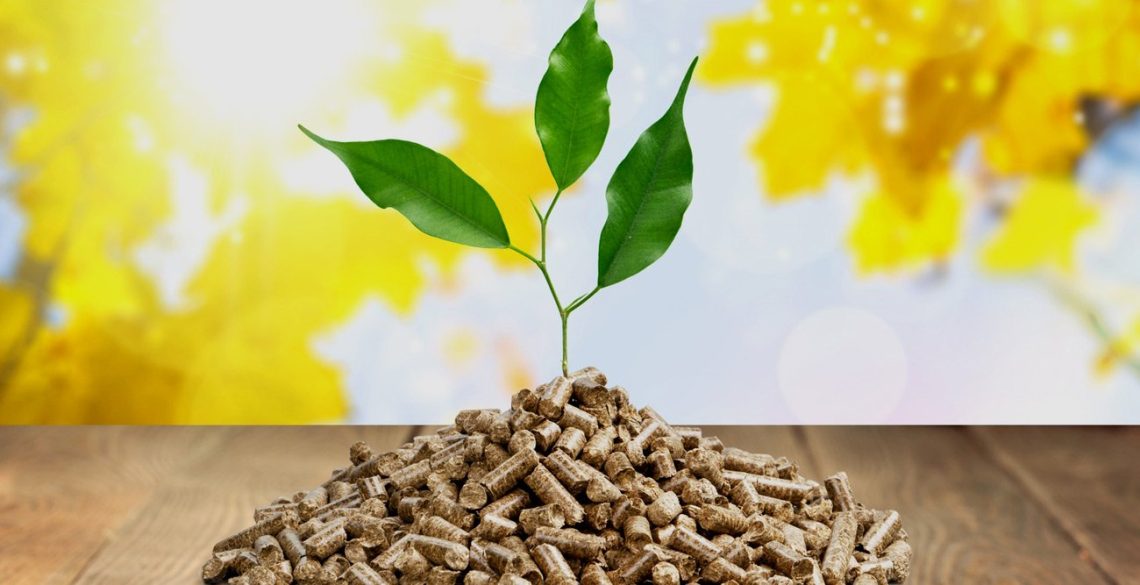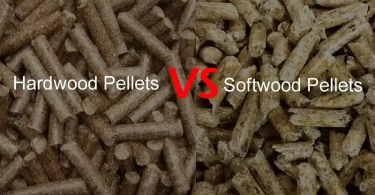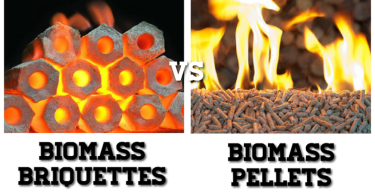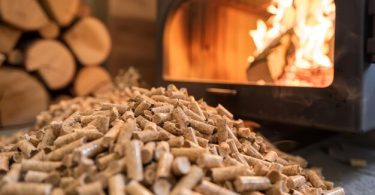In recent years, a debate has been heating up about how green wood pellets are as a fuel source. When it comes to fuel pellets, they’re mostly sourced from biological materials that are fibrous in nature and rich in carbon. This makes them a perfect fuel to burn, but as there are associated CO2 emissions, the idea that they are not as green should be considered. Let’s do exactly that.
What Are Wood Pellets?
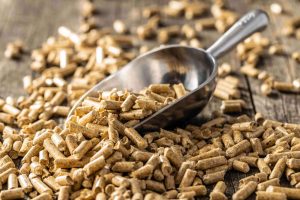
Wood pellets are small cylindrical cylinders that have the diameter of between 6-10mm. They’re between 2-4 cm long and they’re made out of woody fibrous materials by means of extrusion. This makes them very energy dense, easy to store and transport, and a very good transition fuel towards a more sustainable economy. But the main question of how green they are and whether they can be compared to burning coal and wood logs still remains.
How Green Are Wood Pellets?
Advocates of the idea that wood pellets are not a very green energy source simply say that burning wood pellets releases a lot of CO2. And although this is true, the story is more complex, and there are multiple factors that should be taken into consideration before we make the final verdict. Of course, there is no one size fits also solution here, so we will investigate each of the following factors in detail, to better understand what makes pellets green or not so green.
In doing so, we will take a look at the feedstock material and how its proper choice can impact the sustainability level of wood pellets. We will also take a look at the energy input that is needed to produce the pellets themselves, at the transportation costs, as well as different environmental aspects of their production and combustion.
Then we’ll pay attention to the carbon dioxide that is released, how to responsibly manage forests without endangering them, and we will pay attention to PM particles as the most significant pollutant. On top of this, we will take a look at ash residues, which could either have detrimental consequences to the environment or very beneficial ones.
-
Pellet Making – Feedstock Material
When it comes to the process of making pellets, the material that is used as feedstock is of paramount importance. In fact, pellets can be made from virgin wood that comes from responsibly or less responsibly managed forests, as well as from agricultural and wood processing Industries. In the former case, pellets that come from feedstock from responsible managed forest are going to be the best solution when it comes to sustainability.
This means that the forests should be completely cleared such as for agricultural or residential use and that the trees should be felled in such a way that the forest has a good chance of replenishing the wood removed from them. Clearing the land is simply not the sustainable solution today.
When it comes to feedstock materials that are sourced from other Industries, this is the most sustainable solution there is. Although advocates of the idea that pellets are not green like to mention that CO2 will be released even if we burn the waste, it should also be noted that the alternative, that is currently in practice in many parts of the world, is simply sending sawdust and wood chips from from wood processing industry into landfills.
Here this carbon-rich material decomposes in anaerobic conditions which results in a lot of methane being released. Methane is a more powerful greenhouse gas than carbon dioxide is, making this practice even more harmful to the environment.
-
Pellet Making – Energy Input
When it comes to making pellets, a lot of energy is needed. The energy that is used in pellet production is primarily used in milling the woody materials as the pelletizers, or the machines that make pellets themselves, demand sawdust like materials. The second part of the production is the extrusion of the pellet material, which is followed by the cooling phase. All of these parts of the production of wood pellets demand some energy, and, on an industrial scale, this energy really builds up.
However, the added benefits of having a fuel of uniform size and diameter, and the significantly reduced need for storage space and transportation costs and associated emissions, are more than enough to make up for the energy used in the production process and associated CO2 emissions. Needless to say, all the energy that is used in the production of pellets can come from renewable sources.
-
Pellet Making – Transportation Costs
Another very important benefit that comes from the pelletizing itself are the reduced transportation costs and associated emissions. In fact, it takes only around 1% of the energy that is already stored in the pellets to transport them by road, up to a distance of 250 kilometers. It takes the same amount of energy to transport them 2,500 km over sea routes. It is thanks to their easy storage and lower volume that they occupy, that the transportation costs and associated CO2 emission are much reduced.
-
Environmental Aspects
These two factors, previously described, make wood pellets have positive environmental aspects. Although we’re still talking about the combustion process and CO2 that is being released, it is necessary to understand that significantly reduced CO2 emissions in the production and transportation are already an environmental benefit in its own right.
On top of this, pellets are burned in special pellet stoves, which burn at very high efficiency rates, with some models reaching 91% efficiency. The same simply cannot be said of any coal or wood-fired combustion chambers or furnaces. Even on an industrial scale, a significantly reduced amount of Carbon Monoxide and PM particles is released and the ash that is produced during the combustion process is not toxic and contains very little sulfur.
-
CO2 Released
When it comes to the CO2 that is released during the combustion process of pellets, it is necessary to state that CO2 does get released. However less carbon monoxide and less methane are released during their burning phase. CO2, in its own right, is a greenhouse gas but at the same time does not pose as much danger to human health and cannot store as much thermal energy once it reaches the atmosphere as some other gasses can.
Therefore, it can easily be proven that the CO2 released during the combustion process of wood pellets could be less harmful to the environment than burning wood or coal. Yet another thing that is necessary to mention is that any form of fossil fuel that is burned, with however efficient combustion level, is still going to result in the release of carbon that has been stored underground for millions of years.
We, as a species, simply haven’t evolved in atmospheric conditions where that particular carbon was present. For this reason, pellets can also be considered to have better environmental effects than burning fossil fuels, because the carbon is simply cycled through the atmosphere. The carbon released out of your chimney is the same carbon that has been soaked up by the trees used in the production process of wood pellets.
-
Forests Endangered
Of course, we should not forget that all the forests that the virgin wood used for pellet production comes from should be responsibly managed. Leaving forest as they are is oftentimes not a very good idea as very dense treetops and bush that can be found at the foot of the trees poses significant health risks to the forests and increases the chances of wildfire spreading.
As responsibly clearing forests and cutting down overgrown trees is a normal routine in any country of the world, the idea of using these waste materials to produce wood pellets simply diverts this CO2 into your furnaces where the energy that is stored in carbon chemical connections is simply released to heat your home and is not released at random into the atmosphere.
-
Ash Residue
During the combustion process itself, not 100% of the material fed into the combustion chamber will actually burn up. The residue that remains is called wood ash. This ash can have detrimental effects on the environment or beneficial ones, depending on how it is disposed of. If this ash is sent into landfills, it can slowly trickle into the soil, where it can make the soils and the water in them more basal. However, if evenly spread on agricultural land, or if used for other agricultural applications, this ash can actually supply a lot of nutrients to the soils and reduce the need for artificial fertilizers. Wood ash actually contains more minerals than most artificial fertilizers do.
-
PM Particles
As the combustion process itself is very efficient, reaching 91% efficiency, it is also necessary to note that the PM particles, that have tremendous effects on human and animal health, are not released in such large quantities. In fact, most wood pellet stoves will produce barely any detectable levels of PM particles.
Although this does not necessarily need to have an effect on how green these fuels are, the risk that PM particles pose for human health should still be noted. As the combustion process is fully automated in pellet stoves, the combustion process burns up almost all the material that enters the chamber, leaving little to no PM particles and very little ash.
Final Considerations
When it comes to how green wood pellets are, different factors should be considered. A clear statement that wood pellets are a green fuel and a sustainable one for that matter can be made but only if pellets come from responsibly managed forests or from ways from other industries.
Low moisture content will make sure that less CO2 is released for every kWh of heat that is released into your home and the little ash residue that is produced during the combustion process can be used in agriculture applications. The decrease in the number of the PM particles that are released into the environment should also be taken into consideration.

